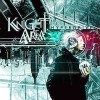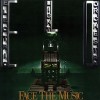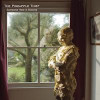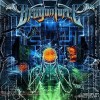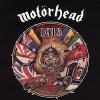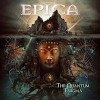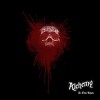Loading cart

Manipulation Under Anesthesia
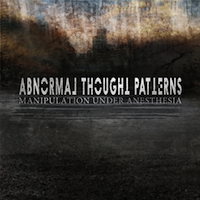
"Abnormal Thoughts Patterns is a new technical metal trio that comes onto the scene equipped with twenty-plus years of experience. Featuring Mike Guy on drums and twins Jasun and Troy Tipton on guitar and bass respectively, ATP is perhaps better known as the musical backbone of underrated prog metal purveyors Zero Hour. Apt comparisons between the Californian three-piece and acts such as Death and Animals as Leaders have been made, but when Abnormal Thought Patterns are at their most frenetic, they also share Blotted Science's aptitude for conjuring up aural insect swarms. Some of this stuff is guaranteed to make listeners' heads spin.
Manipulation Through Anesthesia is ATP's debut full-length release, and it gets off to an excellent start, extending on the saga of the very first tracks they wrote, "Velocity and Acceleration" parts 1-4. These songs, numbered from 5 to 8, flow together as one connected work, clearly taking place in the same universe and containing shared motifs. It's 13 minutes of some of the finest instrumental metal out there. The album then takes a left turn in the form of "Calculating Patterns", a pleasant, jazzy cooldown. It is the first of several mellow tunes that demonstrate Abnormal Thought Patterns' diversity.
"Harmonic Oscillators", the album's most challenging cut in more ways than one, is also worth a mention. Here, the guys in Abnormal Thought Patterns lose themselves in mathemathics for the first and only time on the album. It's the type of song to make aspiring musicians seethe with envy and set their instrument of choice on fire, being a technical tour de force full of mindboggling time signatures and incredibly dexterous playing. It's also, again with the maths, the only 7+-minute song on an album where the average one clocks in at 4 minutes, and without changing the formular around much. For many, this all-out assault will no doubt be considered the highlight of the album. For others, it'll be a bit too much of a good thing.
Speaking of the formular, ATP seems to have carved out a more than solid niche for itself already. Though the notes-per-minute count is oftentimes off the charts on Manipulation Under Anesthesia, the majority of its content manages to stay quite musical. The main event of their faster songs tend to be a heavy, hypnotic, repeated guitar riff, assisted by the always-very-audible bass humming surprisingly melodic tunes while the drums keep everything in place, usually prioritizing cymbal and snare patterns over flashy tom fills. On that note, the album is in no way lacking in heaviness or rhythmic depth despite foregoing the use of double kick drums. Quite an unusual feat in the shred-based instrumental metal environment.
For anyone familiar with Zero Hour, it should come as no surprise that ATP succeeds in shredding with style. But there's a lot more to them than that. Abnormal Thought Patterns keep an excellent balance between all three instruments (which are occasionally joined by some light synth accompaniment), making sure there's always something worthwhile happening on several fronts, and they're able to impress even when venturing out of their comfort zone. Manipulation Through Anesthesia does lose a bit of steam towards the end, but is nonetheless an impressive album and a very promising debut." - Metal Revolution


